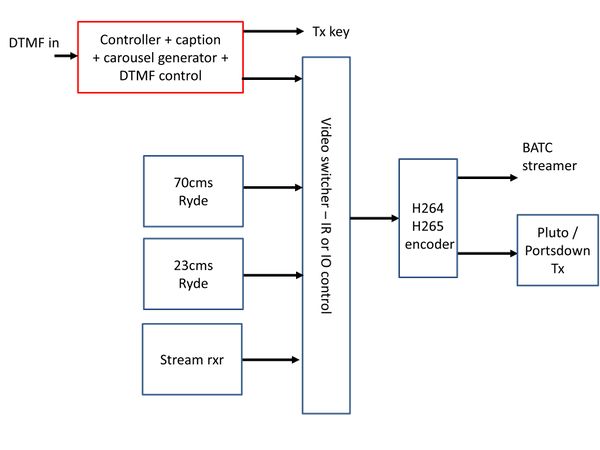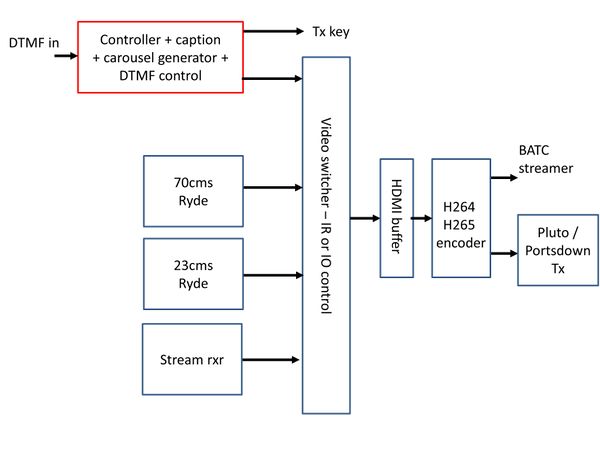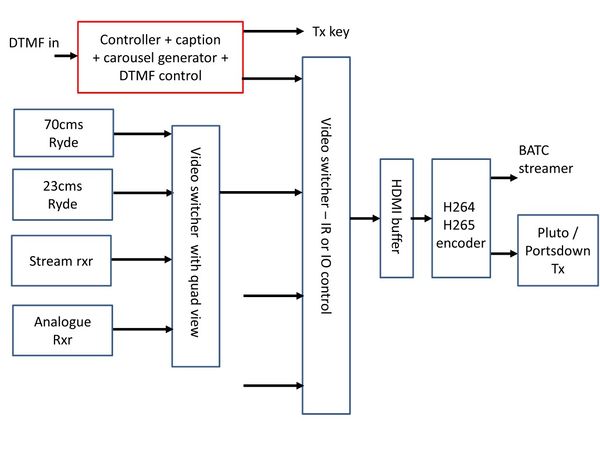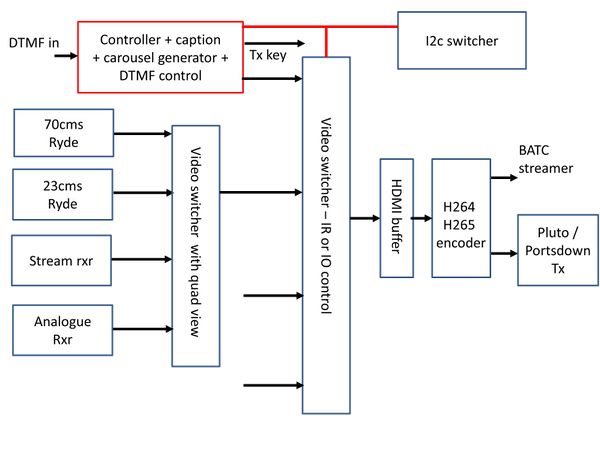Difference between revisions of "Repeater system configurations"
| Line 53: | Line 53: | ||
However, the controller does also out the video switch command as GPIO hardware switch lines. These can be used to drive an analogue video switcher. | However, the controller does also out the video switch command as GPIO hardware switch lines. These can be used to drive an analogue video switcher. | ||
| − | Currently the controller graphics output is HDMI only. The ability to output composite video may be included in a future release. However HDMI to composite converters are easily available and can be used to generate PAL or NTSC graphics. | + | Currently, the controller graphics output is HDMI only. The ability to output composite video may be included in a future release. |
| + | |||
| + | However, HDMI to composite converters are easily available and can be used to generate PAL or NTSC graphics. | ||
Revision as of 11:32, 20 February 2022
Back to repeater controller main page
The BATC repeater controller is designed to be a flexible but basic controller and requires to be configured with audio and video switches to become a complete repeater.
This page shows some typical configurations.
Basic HDMI repeater
This example uses a standard seamless HDMI switcher with 4 inputs, one of which is the HDMI output of the controller RPi, controlled by Infra Red.
Experience has shown that although the switch is advertised as seamless, the switch between sources is not truly seamless. This glitch is enough to cause any encoder following the switch to hang up. This problem is solved by using another HDMI seamless switch (#1) as a buffer between our main switch (#2) and the encoder.
HDMI repeater with Quad view
In the above design, the controller HDMI output is connected to the main switch (#2), limiting the number of inputs available for recievers etc. One input on the quad view facility would also be used by the controller.
To increase the number of inputs, a 3rd HDMI seamless switch is connected to an input of the 2nd HDMI switch. The repeater controller IR commands for any of those inputs and the quad view are set to also include the command to set the 2nd switch to the correct input.
Additional inputs can still be connected to the spare inputs on switch #2 but will not be seen in the quad view.
Audio switching
In the basic configuration, all audio switching is by the HDMI switch.
However, when using a quad facility, most HDMI switches will only carry the main audio channel meaning audio from any other receiver is not heard making the multiple receiver quad view useless.
To overcome this, the BATC controller will also command an external i2c controlled audio switch. It has been designed to be used with this switch DATV repeater audio switch
Using this audio switch, all analogue audio inputs are routed to the switch. When quad is selected, the controller will switch all 4 audio sources to the output.
Note - This configuration does require the use of an encoder with a separate analogue audio input. The Chinese encoder box use by several groups has this facility. https://www.aliexpress.com/item/4000645870955.html?spm=a2g0o.9042311.0.0.dab94c4d4GjfHS
Talkback audio
Most ATV repeaters carry the talkback audio channel (144.750) on a separate audio channel. Using the Chinese encoder box, this can be input as 1 channel on the analogue audio input.
DTMF control audio
The BATC repeater controller uses an onboard DTMF detector which detects DTMF from the mic input on a USB audio dongle (using a standard Portsdown white USB dongle). This can be fed from the main input audio, 144.750 rxr or a separate control rxr.
Analogue video switchers
The controller is designed primarily for use with an HDMI video switcher.
However, the controller does also out the video switch command as GPIO hardware switch lines. These can be used to drive an analogue video switcher.
Currently, the controller graphics output is HDMI only. The ability to output composite video may be included in a future release.
However, HDMI to composite converters are easily available and can be used to generate PAL or NTSC graphics.



